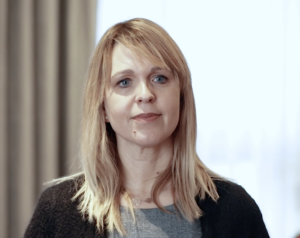 CEFLEX Sustainable End Markets workstream is planning industrial scale trials delivering higher-value end market applications for flexible packaging. This work is building the business case for investment and delivery of a Quality Recycling Process, able to unlock the environmental and economic potential of mechanical recycling.
CEFLEX Sustainable End Markets workstream is planning industrial scale trials delivering higher-value end market applications for flexible packaging. This work is building the business case for investment and delivery of a Quality Recycling Process, able to unlock the environmental and economic potential of mechanical recycling.
In a series of interviews, we speak with CEFLEX stakeholders leading this transformation. We spoke to Monica Battistella, Product Manager and Sustainability Advisor at Taghleef Industries to explore what this means in practice and prospects for the future.
What should be done to increase the amount of polyethylene and polypropylene that are put on the market as flexible packaging?
It is not always easy to drive a change in favour of polyethylene and polypropylene structures. The main reason is that stakeholders in this industry feel unsure due to a lack of consistency in EU regulations on topics such as recyclability or due to unclear guidelines on better packaging design.
Not to mention that there are still cases when the value chain is putting all efforts to redesign the packaging so that it can fit in the polyethylene and polypropylene recycling schemes; but collection schemes, sorting and recycling infrastructures are missing, so efforts are made in vain.
How do you see existing technologies play a role in making the shift from today’s volume-based recycling into tomorrow’s value creating via quality recycling?
Flexible packaging has a tremendous value when it comes to marketing the product it contains. Bright colours, metallic inks, bright lacquers, full prints are undoubtedly very appealing and attractive for consumers. However, the reverse side is that all this wonderful embellishment decreases the quality of recycled resin we can get from these packages. Technologies which can help “cleaning” and get back or closer to original quality, would make a lot of difference.
Another aspect, not to underestimate, is consumer education, so that they can dispose correctly of the package once empty. Having a simple label or instruction on the package, would help the consumers to dispose of it correctly either into plastics or to waste for energy recovery. Consumers would then act as “pre-sorting” of what is ending up into plastics streams.
Can we sort out recycled polypropylene from flexible plastic waste?
Our experiences in the CEFLEX Sustainable End Markets workstream have helped prove that it is possible to sort polypropylene out. Provided that a value and larger end market can be created, then polypropylene fraction is surely expected to grow along with its quality.
What end markets do you see fit for the recycled polyethylene and recycled polypropylene from flexible packaging waste?
Recycled polyethylene and polypropylene have been used for many applications but very seldom back into flexibles for household applications.
However, the need to better close the loop in a circular economy has triggered new ideas so that we have now some examples in flexibles packaging as well. We could think of many applications If we could just understand that recycled plastic does not need to look perfect, just like recycled paper and cardboard are not – and then we would see the higher value that it has in simply being good for the planet. Consumers have already understood this. The only limit we have in applications is the compliance to food contact legislation.
Who has to implement the changes in the collection, sorting and recycling of household collected flexible packaging in order to use the maximum amount of recycled polymers fit for packaging applications for your brands?
On one side we need investment to guarantee that all flexible packaging is collected. This is essential to the next steps of sorting and recycling. Clear guidelines will make sure that we can get higher and consistent quality already at sorting gate. Better quality will most certainly bring along higher value end applications because of the better properties of the recycled resin. The industry and the entire value chain can do their own part by investing money, time and knowhow. Yet, it is essential that governments and public authority recognize these efforts and support them through proper legislation and benefits.
